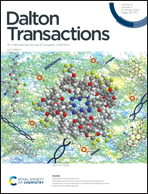Enhanced Jahn–Teller distortion boosts molybdenum trioxide's superior lithium ion storage capability†
Abstract
Upgrading the energy density and cycling life of current lithium ion batteries is urgently needed for developing advanced portable electronics and electric vehicles. Amorphous transition metal oxides (TMO) with inherent lattice disorders exhibit enormous potential as electrode materials owing to their high specific capacity, fast ion diffusion, and excellent cyclic stability. Yet, challenges remain in their controllable synthesis. In this study, the amorphous phase is induced into α-MoO3 crystal nanobelts at room temperature with the aid of Jahn–Teller effect via enhanced lattice distortion triggered by the accumulation of low-valent molybdenum centers. The optimized HI-MoO3-36 h exhibits high reversible capacities of 886.0 at 0.1 A g−1 and 491.1 mA h g−1 at 1.0 A g−1, respectively, along with outstanding stability retaining 83.4% initial capacity after 100 cycles at 0.1 A g−1. The crystal engineering strategy proposed in this work is believed to be a salutary reference towards the synthesis of high-performance TMO anodes for energy storage applications.



 Please wait while we load your content...
Please wait while we load your content...